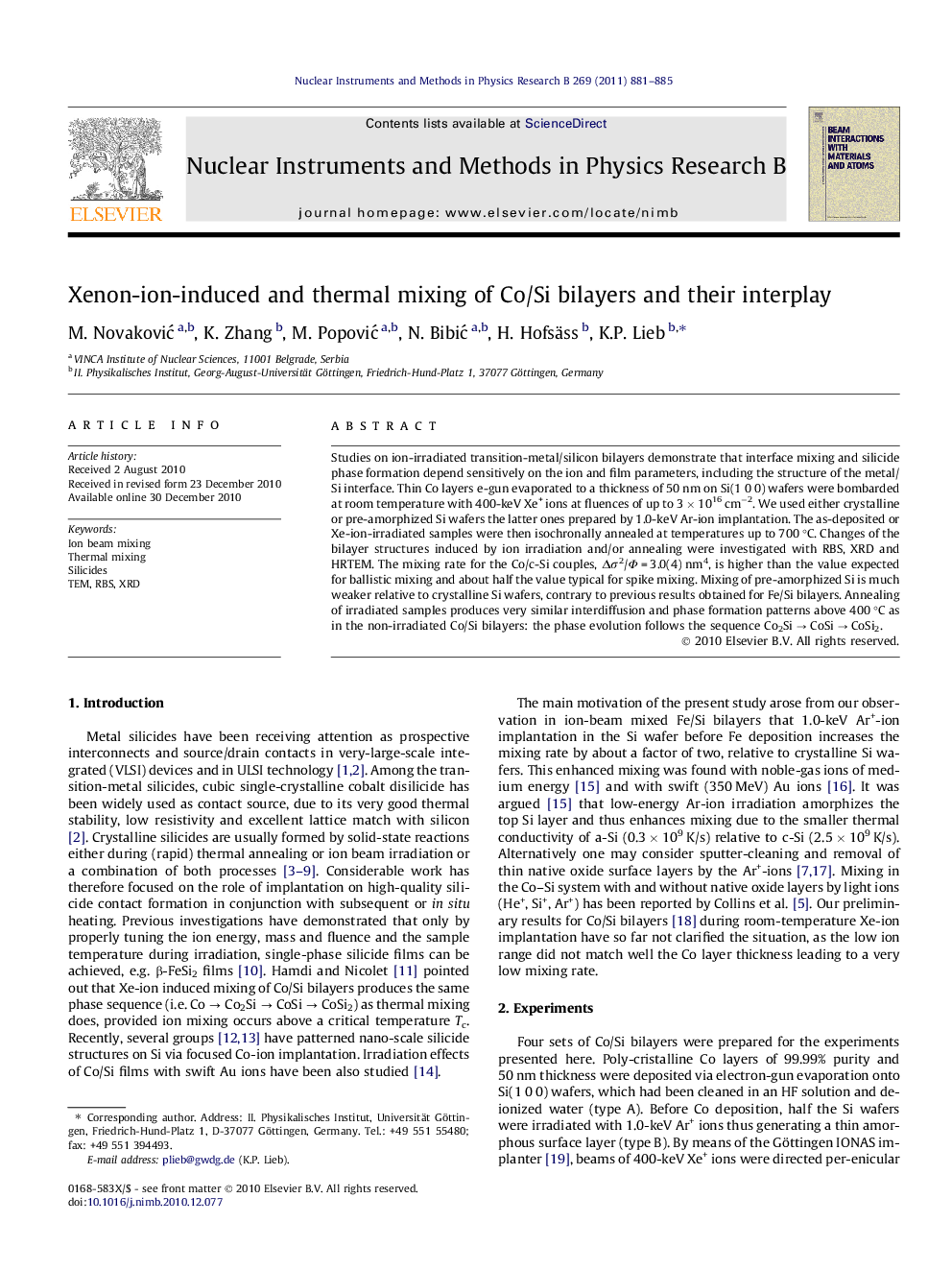| Article ID | Journal | Published Year | Pages | File Type |
|---|---|---|---|---|
| 1686197 | Nuclear Instruments and Methods in Physics Research Section B: Beam Interactions with Materials and Atoms | 2011 | 5 Pages |
Abstract
Studies on ion-irradiated transition-metal/silicon bilayers demonstrate that interface mixing and silicide phase formation depend sensitively on the ion and film parameters, including the structure of the metal/Si interface. Thin Co layers e-gun evaporated to a thickness of 50 nm on Si(1 0 0) wafers were bombarded at room temperature with 400-keV Xe+ ions at fluences of up to 3 Ã 1016 cmâ2. We used either crystalline or pre-amorphized Si wafers the latter ones prepared by 1.0-keV Ar-ion implantation. The as-deposited or Xe-ion-irradiated samples were then isochronally annealed at temperatures up to 700 °C. Changes of the bilayer structures induced by ion irradiation and/or annealing were investigated with RBS, XRD and HRTEM. The mixing rate for the Co/c-Si couples, ÎÏ2/Φ = 3.0(4) nm4, is higher than the value expected for ballistic mixing and about half the value typical for spike mixing. Mixing of pre-amorphized Si is much weaker relative to crystalline Si wafers, contrary to previous results obtained for Fe/Si bilayers. Annealing of irradiated samples produces very similar interdiffusion and phase formation patterns above 400 °C as in the non-irradiated Co/Si bilayers: the phase evolution follows the sequence Co2Si â CoSi â CoSi2.
Related Topics
Physical Sciences and Engineering
Materials Science
Surfaces, Coatings and Films
Authors
M. NovakoviÄ, K. Zhang, M. PopoviÄ, N. BibiÄ, H. Hofsäss, K.P. Lieb,
